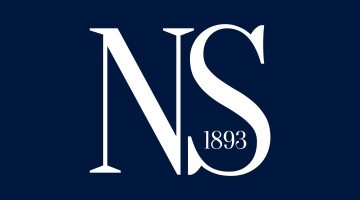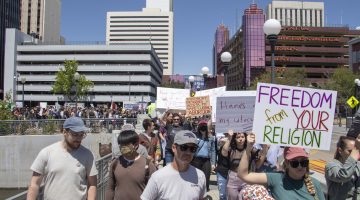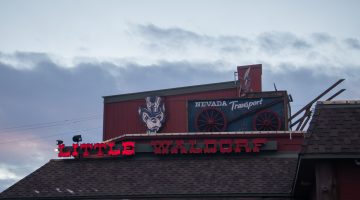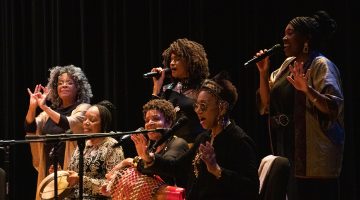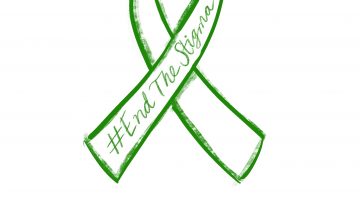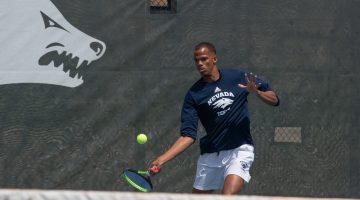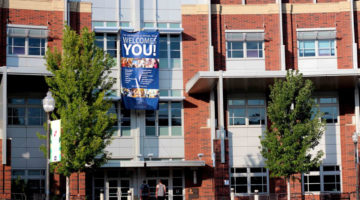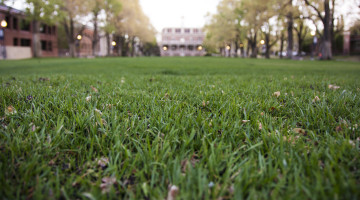 Krista Franklin, UNR’s artist in residency 2016-2017, performed her live poetry reading and visual art presentation “Sanctuary: A Performance” at the Holland Project on Thursday, March 16.
Krista Franklin, UNR’s artist in residency 2016-2017, performed her live poetry reading and visual art presentation “Sanctuary: A Performance” at the Holland Project on Thursday, March 16.
Franklin is a working artist and teacher from Chicago. During her residency at UNR, she has been preparing for “Sanctuary.”
“When I originally wrote the proposal for Sanctuary, it was me trying to grapple with [the question of] how do we as writers, artists, dancers, performers find that space within ourselves…when you’re focused on your work, the whole world kind of falls away, and you find a zen spot of peace,” Franklin said. “But then after the election happened, the term ‘sanctuary’ took on a whole other turn. So I had to think long and hard about what the performance was going to look like with everything that was going on in the nation.”
On this project she collaborated with a handful of artists from UNR. Instructor Jeff Ray, music student Aja Hawkins, digital media student Nick Minor, and digital media and journalism student Gaige Oregon all contributed to “Sanctuary.”
Ray played guitar over an original electronic music composition he wrote.
 Hawkins provided a vocal accompaniment. She incorporated such songs as “What’s Going On?” by Marvin Gaye, “Institutionalized” by Kendrick Lamar and “Hymn” by Lord Prepare Me.
Hawkins provided a vocal accompaniment. She incorporated such songs as “What’s Going On?” by Marvin Gaye, “Institutionalized” by Kendrick Lamar and “Hymn” by Lord Prepare Me.
“All of which deal with things we’re dealing with now and strike emotion,” Hawkins said.
Oregon played physically-manipulated vinyl on two record players. There ended up being a total of thirteen different records. The records included “When am I Gonna Find True Love”, two “yoga for self-awareness” records which were played simultaneously, a “stereophonic test record” used to calibrate a record player and the song “Lover” played by the Dave Brubeck Quartet which was used to tie the open and close of the composition together.
“I hope spectators enjoy the performance, but I wouldn’t mind if people were weirded out or confused or anything else really,” Oregon said. “Sanctuary is whatever you want it to be.”
Minor created the visual element through projection; he manipulated a short film by Hawkins by combining found footage to achieve glitch effects and layer multiple videos together using a video synthesizer.
Some of the shots included lines taken from Franklin’s poetry. Some of the text included “Where is the pathway to peace?/The roadmap within?”, “What address is SAFE?” and “Does a drone know/He’s without sting?” The visuals included images of children on a playground, bright tulips and old footage of a river baptism as well as videos of drones and the flag upside down, a reference to Sean Spicer’s pin.
“A simple mistake that carries so much symbolic weight,” Minor said.
The multitude of artistic expression may have been overwhelming at first, but it was soon appreciated as transcendent.
“Every idea and every concept requires a different artistic discipline,” Franklin said.
“It’s kind of an experiment between themes and styles,” Oregon said. “It’s more of a conversation between artists than a unified piece. We were all able to take our own direction on this project, but we worked with each other to create a complete composition.”
It goes without saying that the performance was politically compelled.
“I really want there to be a complete eradication of fear and anxiety,” Franklin said. “We are living in a time where everything around us is trying to teach us to be afraid of something. It generates violence and cruelty. I really hope it opens up a space of conversation where we can talk about sanctuary for ourselves and for others, and how do we manifest that in our country.”
“When applying this objective lens to the United States, it leads me to think that the idea of the American Dream is unachievable especially considering the current sociopolitical climate, the sanctuary that the United States once was for immigrants no longer offers the relief it claims as fundamental,” Minor said “Nevertheless the concept and belief in sanctuary remains.”
Franklin has been working as an artist for the past sixteen years. Finding prosperity as an artist is difficult enough, but Franklin has seen a special set of struggles as a woman of color.
“It’s impossible for me to talk about that experience without class,” Franklin said. “If I were a young woman of color who came from affluence, it probably would have been much easier. I may have been able to do it a little faster…There will be times when I have to navigate the nonbelievers, the skeptics, the flat-out racists and the people who want to use [my] work for their own agendas…It’s a weird-ass industry. It always has been. It’s built on commerce and ideas. It can be challenging if you don’t have the stomach for it, and sometimes I don’t have the stomach for it.”
She added, simply, “Art is labor.”
Still, she has seen great success. Some of her biggest influences include Jean-Michel Basquiat, Frida Kahlo, Toni Morrison, Sonia Sanchez, Amiri Baraka, Andy Warhol, Ralph Waldo Emerson and Philip K. Dick as well as Joni Mitchell, Steely Dan, Public Enemy, Outkast and Stan Lee.
However, she credits her greatest influences to her family, specifically her parents, who provided the basis for her intellectual and creative life.
“When [art] is at its highest vibration…it’s teaching us all of the various ways and possibilities of what it means to be human,” Franklin said. “We need to be reminded that we are human and we can be vulnerable with one another and that we can express our ideas and our thoughts.”
The future for “Sanctuary” is unclear. Franklin hopes to see a book or an exhibition come out of it but is unsure. “Sanctuary” was a single performance, but will, hopefully, continue to evolve as it did since its inception, with new artists and new ideas. Franklin says it boils down to one essential theme: love, both romantic love, and love of community. It was not intentional or planned, but happened organically over time, which she calls “A very beautiful pleasant surprise.”



